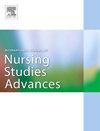2018-2023年瑞士长期护理的日常人员配备趋势和变化:回顾性纵向分析
IF 3.1
Q1 NURSING
International Journal of Nursing Studies Advances
Pub Date : 2025-07-29
DOI:10.1016/j.ijnsa.2025.100395
引用次数: 0
摘要
劳动力短缺是瑞士长期护理服务提供者面临的一个持续挑战。在2019冠状病毒病大流行之后,迫切需要了解当前的劳动力趋势,以加强瑞士的长期护理环境。目的:我们旨在描述大流行前、中期和后的趋势和长期护理人员配置的变化。设计:我们使用2018年至2023年的日常管理数据进行了回顾性纵向分析。背景:瑞士一家拥有180张床位的多站点长期护理机构。方法我们应用时间序列分解——一种区分季节性影响和剩余变化趋势的方法——来描述三个结果的趋势和变化:a)供需匹配(即,现有的直接工作人员如何满足实际护理需求),b)全职缺勤人数(即,有多少工作人员计划工作但缺席),c)内部人员库或外部机构的临时工作人员数量。我们使用均值、置信区间和百分比来总结年平均值。结果:我们将6个研究年中533,003个工作人员班次和387,585个住院天数的数据联系起来。总体而言,我们观察到恒定的变化,但供需匹配呈下降趋势,从2018年的每天平均工作人员人数+6.88人[95%置信区间CI 6.86 - 6.90]到2023年的-0.23人[95% CI -0.24 - -0.22],这意味着在研究的每一年,对于相同的住院病例组合,每天大约减少一名工作人员。同时,每日员工缺勤从平均11.08例[95%可信区间11.06 - 11.09]增加到14.23例[95%可信区间14.19- 14.27]。在大流行之初(2020年),缺勤人数有所减少,但从2021年起,缺勤人数持续增加,特别是那些持续时间≥1周的缺勤人数。作为组织的回应,临时员工的轮班率从2018年的5.5%上升到2023年的17.7%。结论:我们发现从大流行前到大流行后,供需匹配持续变化,但临床上明显呈下降趋势,这主要是由于工作人员缺勤所致。尽管增加了从内部和外部机构部署的临时工作人员,这种情况仍无法扭转。我们已经揭示了大流行对一个组织满足所需护理需求的能力的深刻影响。医疗保健政策应考虑替代性报销策略,以减轻与大量缺勤相关的财务负担。Registrationnot注册本文章由计算机程序翻译,如有差异,请以英文原文为准。
Daily staffing trends and variation in Swiss long-term care from 2018–2023: A retrospective longitudinal analysis
Background
Workforce shortages present an ongoing challenge for long-term care service providers in Switzerland. After the COVID-19 pandemic, there is an urgent need to understand current workforce trends to strengthen the Swiss long-term care setting.
Objective
We aimed to describe pre-, peri‑, and post-pandemic trends and variation of long-term care staffing.
Design
We conducted a retrospective longitudinal analysis using daily administrative routine data from 2018 to 2023.
Setting(s)
A multisite long-term care facility in Switzerland with 180 beds.
Methods
We applied a time-series decomposition – a method to distinguish trends from seasonal effects and residual variation – to describe trends and variation for three outcomes: a) the supply-demand-match (i.e., how did the available direct staff cover the actual care demand), b) the number of full-time absences (i.e., how many staff members were scheduled to work but were absent), and c) the number of temporary staff from an internal pool or external agency. We used means, confidence intervals, and percentages to summarize the yearly averages.
Results
We linked data from 533,003 staff shifts and 387,585 resident days across the 6 study years. Overall, we observed constant variation but a decreasing trend of supply-demand match from a daily average number of staff of +6.88 [95% confidence intervals CI 6.86 - 6.90] in 2018 to -0.23 [95% CI -0.24 – -0.22] in 2023, meaning that for each year of the study, there was roughly one fewer staff member available per day for the same resident case mix. Simultaneously, daily staff absences increased from an average of 11.08 [95% CI 11.06 - 11.09] to 14.23 [95% CI 14.19- 14.27]. Absences decreased at the beginning of the pandemic (2020) but continuously increased from 2021 onwards, especially those with a duration of ≥ 1 week. As an organizational response, the number of shifts worked by temporary staff has increased from 5.5% in 2018 to 17.7% in 2023.
Conclusions
We found a constant variation but a clinically noticeable downward trend of supply-demand-match from pre- to post-pandemic, largely driven by staff absences. It could not be reversed despite an increased deployment of temporary staff from both an internal pool and external agencies. We have revealed profound effects of the pandemic on an organization’s ability to meet the required care demand. Healthcare policy should consider alternative reimbursement strategies to alleviate the financial burden associated with a high number of absences.
Registration
not registered
求助全文
通过发布文献求助,成功后即可免费获取论文全文。
去求助
来源期刊

International Journal of Nursing Studies Advances
Nursing-General Nursing
CiteScore
5.80
自引率
0.00%
发文量
45
审稿时长
81 days
 求助内容:
求助内容: 应助结果提醒方式:
应助结果提醒方式:


